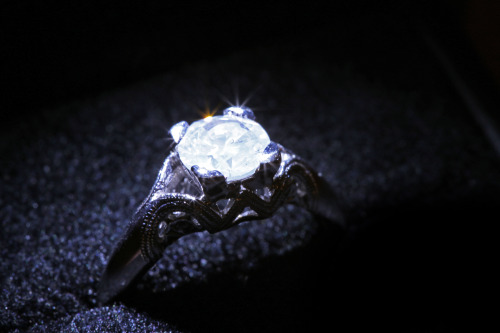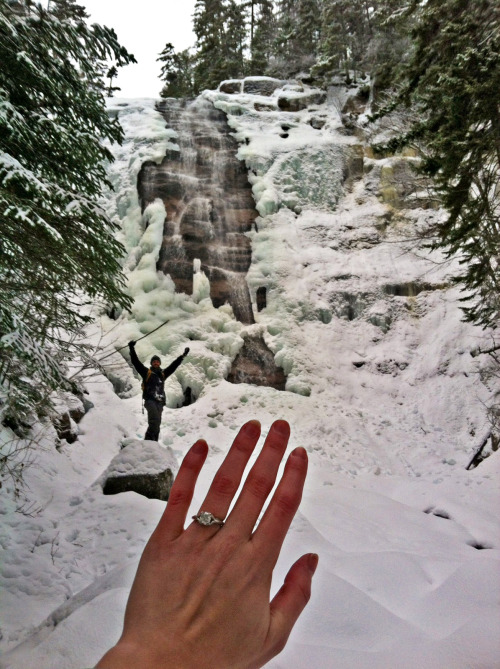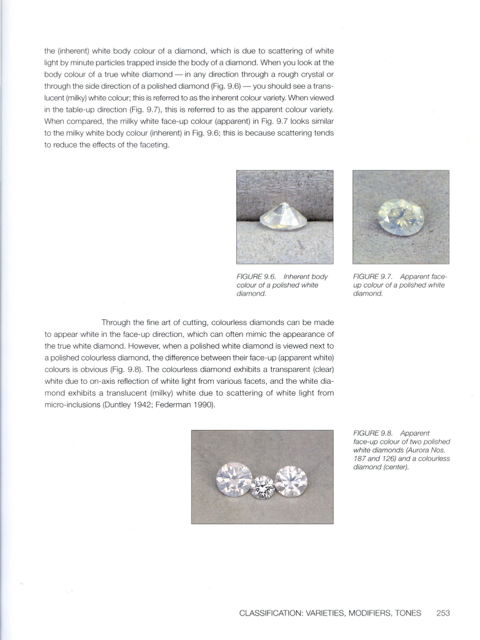#macropod
This post includes information and images about the diamond I gave to my fiancé. She wanted a combination of opal and diamond but, opal is really brittle; therefore, I decided to opt for something a little more special. A GIA certified 1.08 ct Fancy White Round Opalescent Diamond that took me months to track down.
Fancy White Diamonds differ from traditional colourless or “white” or pseudo-white diamonds because they contain tiny inclusions (presumably nitrogen) within the carbon structure of the stone. This chemically interactive framework scatters light in exactly the same way as opal. For this reason, fancy whites are commonly referred to as “opalescent diamonds.”
Fancy Whites are among the rarest diamonds on Earth. Other rare colours include pink and blue.
The Macropod images by Macroscopic Solutions show tiny inclusions that are invisible to the naked eye. I purposely chose these because they preserve the natural identity of the stone. They are considered “birthmarks from the mantle.” In some cases, 1 inclusion is re-projected off of several facets to give the appearance of 1-3 like xenoliths.
The band was custom designed and made by myself, which I modeled from a unique victorian design. It is 14 kt white gold. White gold was used to compliment the opalescent properties of the diamond instead of platinum, which sometimes looks more industrial than elegant.
More information can be found here: http://tinyurl.com/mjzyy45
Diamond sourced by Stephen Hofer, who is a UConn alumnus and fancy color diamond expert. He personally graded every stone in the Aurora collection, which is the largest assortment of fancy colour diamonds in the world and is on display at the Natural History Museum in London. Thank you for your help Stephen! http://tinyurl.com/on48ons
Post link
Hummingbirds in Flight: My Best Footage
I received much attention form the local, wild hummingbirds that I have been disrupting the overall theme of my usual image galleries on flickr, Facebook, Macroscopic Solutions, etc. Therefore, I decided to take clips of only my footage of my interaction with the ruby-throated hummingbirds.
I believe you will find this very impressive. All footage was shot handheld (without tripod) with the Macropod’s Canon 6D at 720P and 60 frames per second. The lens used was the 24-105mm. Aspect ratio varies between clips. All light was natural, exposure was set to 1/4000, aperture was at 5.6 and ISO was at 12800 (yeah… i’m surprised too). If you don’t know why, it’s because most of these shots were taken at dawn when light was not nearly as plentiful as I wanted it.
I really hope yo enjoy this video footage as I do feel it is my best!
All of the images in our database were captured with the Macropod by Macroscopic Solutions. www.macroscopicsolutions.com
Matschie’s Tree Kangaroo (Dendrolagus matschiei) at Woodland Park Zoo (5) by Nick Michalski












